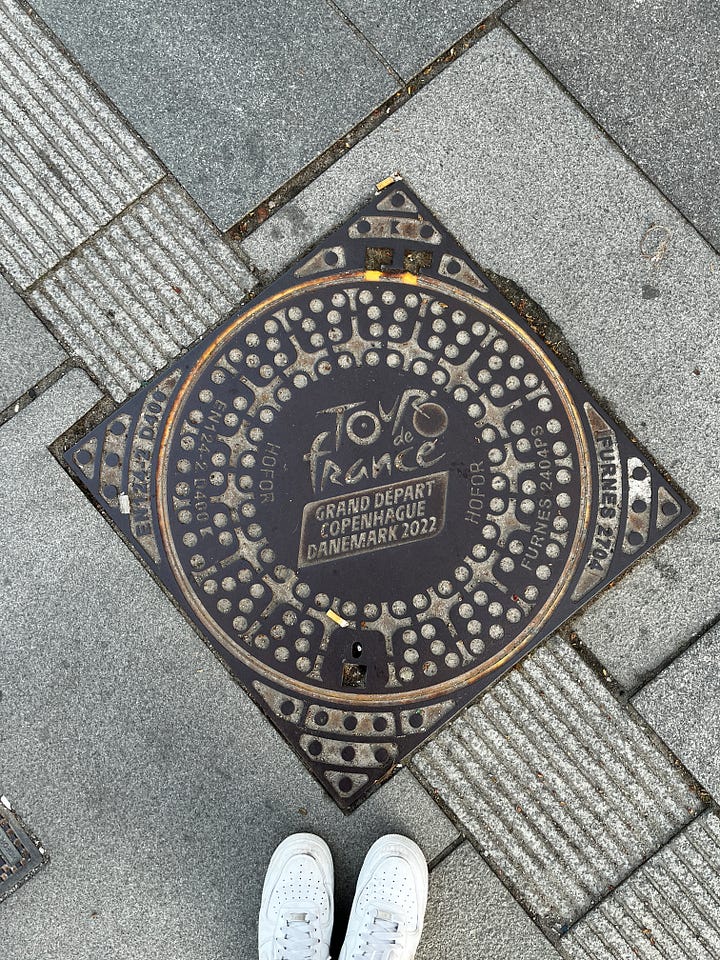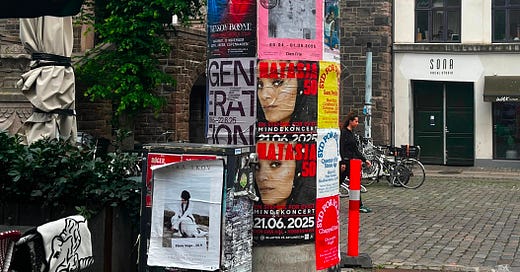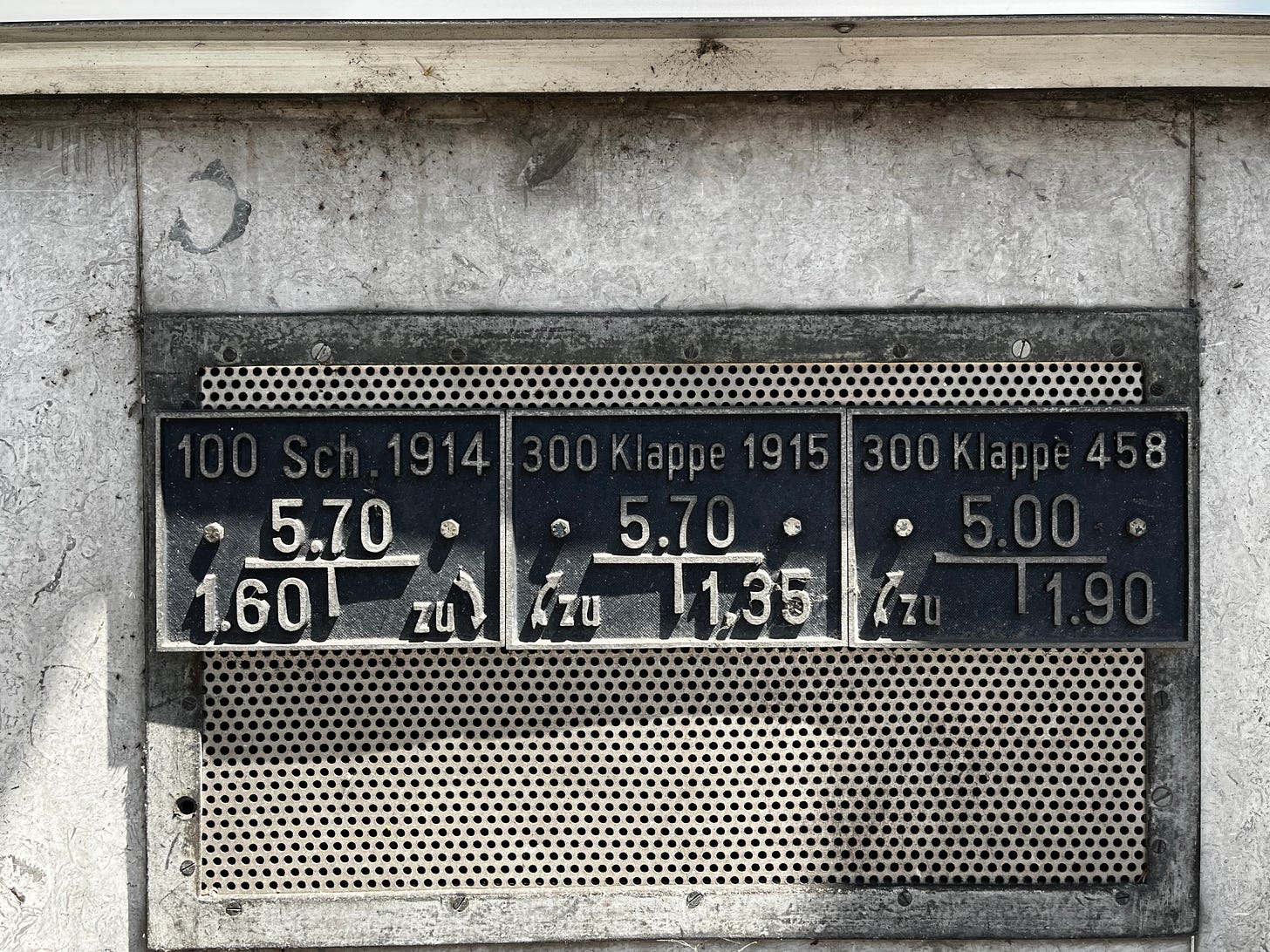I owe you part 2 of the Rangoli Chapbooks series, and I promise that will come out subsequently. In this month’s newsletter, however, I want to share my journey and reflections of teaching an immersive study abroad course, while it’s still fresh on my mind.
A few weeks ago, I was talking to a non-designer friend about some touristy place I had visited. Without thinking twice, I described the place as having “amazing food and excellent Type”. He curiously asked me to repeat what I had just said, and what I meant about ‘excellent type’. His wife—also a designer—explained to him how it’s a common thing for designers to notice the typographic landscape of a new place. He went on to ask me about what other places I thought had ‘good type’. I recalled through my not-so-sharp memory for signage experiences that had intrigued my designer self. Admittedly, it was harder than coming up with, for example, top ten food experiences. Later that day, I did go back to my gallery to recall all the beautiful letterforms I was fortunate enough to witness. Everyone reads (or finds it hard to read) signs, but not everyone appreciates how easy it is to read them (or winces at just how distracting an upside-down s is). That day, not for the first time, I realized how weird—in the best possible way—designers are. We view the world through CMYK-colored glasses. Because of how omnipresent the product of our profession is, we can’t help but observe the Graphic Design around our environment, especially in a new environment. We almost recognize a new place through the newness, or lack thereof, of the design elements: fonts, languages, colors, shapes. I familiarize myself with street signs in a new city and try to find similar graffiti styles across the city. I look for the patterns on the sidewalk and notice the unfamiliar tessellation or tile shape. I look for manhole covers to find new patterns or a historic record on them. I try, and fail, to memorize roads by looking out for memorable signs and type. Not to speak for the entire Design community, but I’m pretty sure most Graphic designers cannot look at a word without either mentally fixing or appreciating its kerning. For us, the world comes together like a mosaic, built by different forms and shapes. We decipher the forms and find the patterns, history, and purpose in them.


What a privilege it was for me, then, when I got the opportunity to travel to a Design Capital of the world purely to point and look at, savor, analyze, research, talk, and obsess about design. Solely, in short, to be a design tourist. This summer, I co-led a group of students from George Washington University to a study abroad trip in Copenhagen, to study “Danish Design Through Culture”. While I have always been a fly on the wall, design critique on call, 24/7, with my unsolicited opinions about every sign I pass or every menu I read, after leading this trip, I noticed that I did it more intentionally; because I was finding a way to teach how to do it. I began thinking about what it means to be a culture sampler, a letter connoisseur, a color hunter—a design tourist.
As a tourist, you want to admire the historic buildings, savor the local food, get a taste of regional fashion, and be a part of the local community. When in Rome, we say. We change our habits and preferences for the duration of a vacation. When you are a design tourist, all these activities also become an excavation in seeking answers as to why things are the way they are and how they differ from your usual surroundings and preferences. While I have always intently admired facades and documented color pallets in a new place, teaching this course forced me to think about defining all these design elements that make up the face of the place. I wasn’t just being a design tourist, but a tour guide for my students to truly appreciate and be immersed in the design of the place. We developed prompts to help students answer questions about what makes something Danish, and itineraries to guide them in working on the prompts. Even lunch became an experiment in understanding Danish culture and, by extension, Danish design. Beautiful cutlery and bilingual menus! Ergonomic chairs and no-nonsense decor! Hygge signs and warm blankets! What does this mean? What makes it Danish? Why don’t I get my cappuccinos in charming, hand-painted china daily at home?
As they say, the best way to learn something is to teach. And re-learn I did, what being a design tourist means. That, and I was still in teacher mode after the course ended, and I traveled around Europe for a while. I kept quizzing myself through the countries I visited, imagining how I would study the interdependencies of culture and design in these new places. It also helped that I was on a tight schedule, so when I reached a new airport, the new kinds of signs, including language, fonts, information, and color, felt like a clear call for me to compare and contrast, to analyze and get a sense of the broader culture of this place. “I read about the origin of this font in this country, makes sense that a revival of sorts is used on the airports”, “Ooh I miss the English translations and clarity of signs from that country here”, “I wonder why these lanes are so small as compared to the lanes back home”, “This neighborhood feels more modern than the other one with stone buildings: do they have codes here that make sure new development follows the historic legacy of this place? I hope they do”; so on and so forth it went. Even though I was no longer teaching a class, I couldn’t stop posing questions that would help me identify the design ethos of all the new places I visited. And I’m afraid this has now become a more permanent lens to my design glasses.
Being a designer has you document letterforms in a new place, and being a design tourist has you process that documentation. Being a design tourist means walking through a street and being at all the places you have visited in the city, all at the same time. It’s more introspective than it sounds. When in Rome, you don’t instantly start seeing like the Romans do. You see as yourself first, and that makes all the difference. You bring your cultural baggage and drag it around till the weather you were not expecting, or the uneven cobblestones, break it. Then you are forced to question the your choices, habits, and preferences, and acquire some brand-new baggage that fits all the new perspectives and thoughts nicely under the allocated baggage allowance, with space for an extra souvenir or two. Being a design tourist means questioning the non-design intricacies of a new environment to make a sense of its design choices—to carry back an illuminating souvenir.











